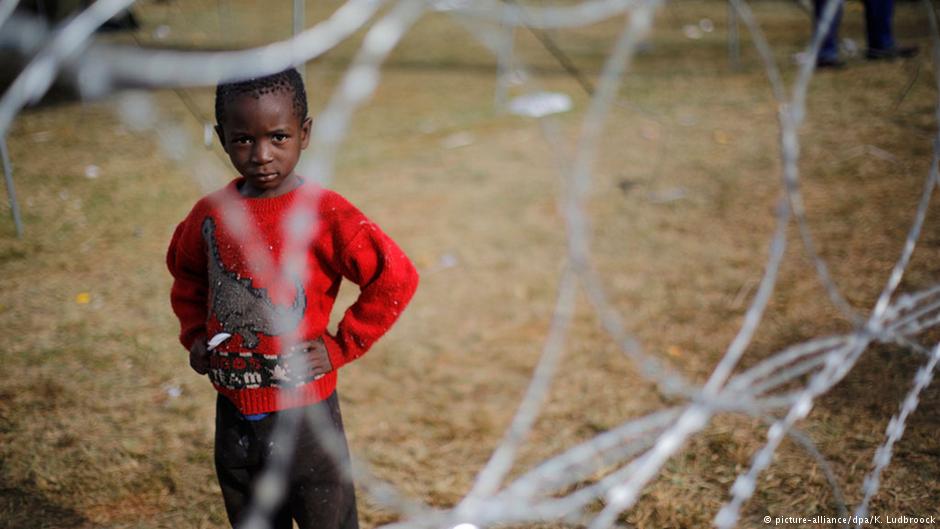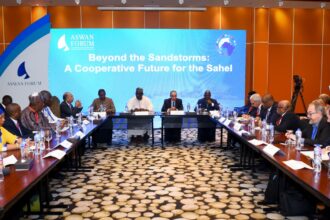Fleeing war, drought and poverty , an increasing number of people from the Horn of Africa are heading south en route to South Africa. After arrival, many face arrest, deportation and xenophobia.
Attempting to escape a dictatorial regime, many Ethiopians are fleeing the country in search of a better life. The country is suffering from severe drought and famine and has a border war with Eritrea. Eritreans are also seeking refuge away from a country most experts rank as the least democratic in the world. Many head north toward Europe while others travel the southern route towards South Africa. Somalian refugees are also joining the trek south fleeing atrocities and violence at the hands of Al Shabaab militants in their country.
For most the goal is South Africa, the only country in the region where refugees and asylum seekers have freedom of movement and the right to work rather than being confined to camps. But as the number of migrants from the Horn of Africa seeking asylum in South Africa reached unprecedented levels, authorities are debating a shift away from the 1951 Refugee Convention that defined the term “refugee,” outlined the rights of the displaced and set the legal obligations of states to protect them.
“South Africa for many years has had a very progressive law regarding migrants, particularly among refugees, and the country was in fact the number one recipient for asylum seekers in the world,” said Loren Landau, a senior researcher at the African Centre for Migration and Society at the University of the Witwatersrand in Johannesburg.
According to Landau, many refugees are not able to access their rights and increasingly the South African government has hinted that they need to control migration.
“They are taking the cue from Australia, Europe and North America saying that we can’t have any more,” he said adding that while they are still formally committed to protecting refugees and migrants in practice, protections are being eroded.
The United Nations Refugee Agency, UNHCR, said South Africa has 120.000 recognized refugees and one million asylum seekers with pending cases. Tina Ghelli is the UNHCR’s regional spokesperson for Southern Africa. “The biggest challenge in South Africa is the implementation of refugee’s rights,” she says. “Sometimes they face discrimination when they access social services and often become targets of xenophobia. Many of them make strong contributions to the community and economy – that is not recognized.”
Although migrants from the crisis areas in eastern Africa are allowed to seek asylum and work, there are currently amendments discussed at the South African parliament to take away the rights to work for those people. Also the government is pushing their neighboring countries like Zimbabwe, Zambia, Mozambique and Tanzania to keep the migrants so they do not travel further to South Africa. But also more and more people from Burundi, Ethiopia, Rwanda, Congo and Zimbabwe are fleeing their homes and arrive in South Africa, an attractive economic giant for many.
Migration flows, which include refugees, asylum seekers, displaced persons and economic migrants put a strain on governments in the region as they struggle to cope with the large number of migrants crossing their borders and moving through their countries. Many live a life as illegal aliens.
There is not just one story according to Landau. Some only pass through. Others try to earn the money to escape to Europe or other countries depending on their experiences. South Africa did not take a moral leadership role, he claims. Their domestic problems come first and the country does not really want to deal with the crisis.
In South Africa three percent of the population are migrants, says Landau. Due to high unemployment rates and little economic growth South Africans are frustrated and discourses of xenophobia have become stronger and as in Europe more mainstream.
Human trafficking
The men, women and children making up these migrant flows towards the southern parts of the continent frequently resort to unsafe modes of transportation and smuggling networks during their journey. They are exposing themselves to injury, violence, detention, exploitation and abuse. Human trafficking has become a huge problem in the southern region. Desperate people are being trafficked from the Great Lakes Region through many countries to South Africa.
Recently, in Zambia police discovered a truck carrying more than 100 Ethiopians during controls. 19 among them were dead. They were most likely victims of human trafficking. Zambia has announced to fight those organized groups although a quick solution is not possible. Ghelli: “Countries are cooperating. But if you stop refugees at the border they use other, more dangerous routes.”
Regional approach
South Africa is not – like many countries – effectively controlling its borders, says Landau. “They have put the military there, but the border with thousands of kilometres is extremely long and South Africa does not have the resources to increase border management.”
Is there a regional approach to deal with the crisis? “There is the Migration Dialogue for Southern Africa, where countries share best practices and policies”, says Ghelli. “That is very challenging especially with those vast and open borders but definitely governments have made an effort. There is no easy fix.”




